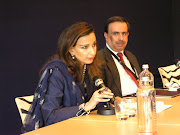Two years ago, India
witnessed its version of the Arab spring in the fiercest extra-parliamentary
movement against corruption in its history as an independent nation. We are now
seeing the electoral dividends of the movement that many had begun to write off
as yet another failed attempt at reforming a robust but increasingly tainted
political system.
The Aam Aadmi
(ordinary man's) Party, a by-product of the protests of 2011, has emerged as
the second-largest party in the state elections in the capital, Delhi, and
could potentially break the mould of Indian electoral politics. India's noisy
and resilient democracy does not need a revolution, but, for many, the Aam
Aadmi victory is the sign of great hope at the end of a year in which the
nation's political and economic stock reached a nadir. Using a broom as its
symbol, Aam Aadmi promises to clean Indian public life of its muck and has
injected the capital's voters with new energy and enthusiasm.
In April 2011, Anna
Hazare, a 74-year-old follower of Mohandas Gandhi who was known for his work
for rural empowerment, led the protests against the corruption that is almost
endemic in Indian public life, and particularly entrenched in traditional
political parties. The demand was for the appointment of a constitutionally
empowered ombudsman who would have extraordinary powers to deliver swift
justice.
While the demand was
never fulfilled and Hazare all but retreated to his rural haven, the need for
more honest politics became the zeitgeist of an anti-establishment political
culture among India's growing middle class. Led by a Hazare protege and former
civil servant, the 45-year-old Arvind Kejriwal, Aam Aadmi has defied all odds
by emerging as the second-largest party in Delhi and holds the balance of power
in the state's legislature.
Few believed the
party would do so well, with Kejriwal defeating the capital's most recognised
face, its thrice-elected chief minister, Sheila Dikshit, by more than 22,000
votes.
In India belonging to
a political family and having huge financial backing were seen as critical
requirements in the electoral system. Many parliamentarians belong to political
families, many are millionaires, and political parties are widely seen as dependent
on ''shady'' or ''black'' money on which no taxes are paid.
Aam Aadmi, by
contrast, had no political lineage, raised money transparently, was driven by a
spirit of volunteerism, and relied on the social media for political
mobilisation. It refused to have any truck with either of the main parties, the
ruling Congress or the opposition Bharatiya Janata Party and has now declared
its preference to sit in opposition rather than form a coalition with either
party in a hung legislature.
Many view Aam Aadmi as
a sign of middle-class radicalism, which has captured the imagination of the
people in a city-state that represents, more than any other part of the
country, a middle-class sensibility and middle-class aspirations. In the past
few years, while the capital's infrastructure has improved beyond recognition,
it has been in the headlines for the wrong reasons: the rape of a college
student in a moving bus; the scam involving the Commonwealth Games; and the
evidence of crony capitalism with lobbyists making deals to influence the
appointment of cabinet ministers. Ironically, the government is led by
unarguably one of the most honest political leaders in Indian public life. And
yet Prime Minister Manmohan Singh, who has an Oxford doctorate in economics, in
public perceptions, is seen as having presided over the most corrupt government
in recent years.
While Aam Aadmi has
been a game-changer in Delhi, the capital is not India and the party barely has
a presence elsewhere in the country. In other states that went to the polls the
mood against the Congress was clearly in evidence with the BJP gaining
significantly. Caste, religion and traditional political loyalties a well as
big money have traditionally played a significant role in elections. But these
differences may be less important now than in the past. The internet, mobile
phones and television may be building a pan-India spirit against outdated
politics and traditional parties. In a country of 1.2 billion, with nearly 500
million aged under 25, there seems to be a new awakening, new aspirations and
anger towards a system that fails to deliver. Aam Aadmi in Delhi may hence be
just the beginning of new politics in India.
A few months ago, it
invited me to join its policy group to prepare a policy document, ''A New
Agenda for India'' that would offer ethical policy alternatives. I dismissed
this as yet another maverick attempt at taking on the impossible and did not
respond with much enthusiasm. It is time to review that decision as India
prepares for change.
(Source: The Age)

















